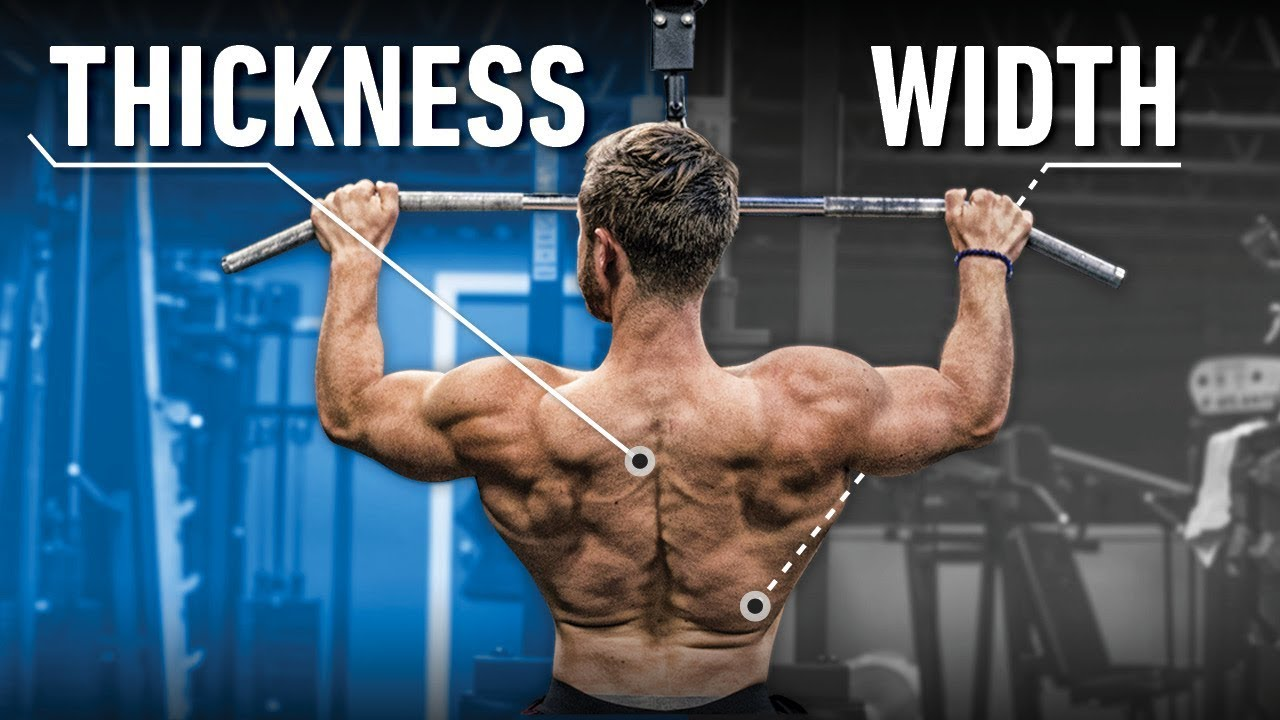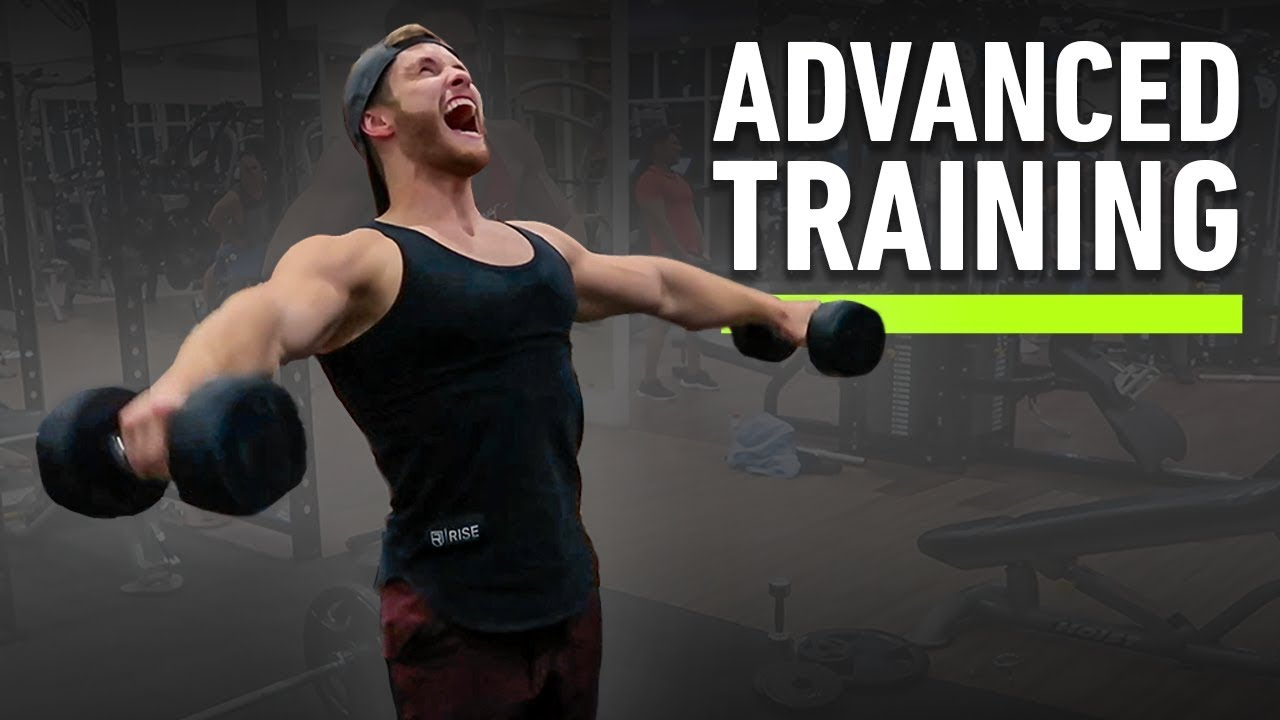Building an impressive back isn’t just about moving heavy weights; it’s about targeting muscles intelligently. Many lifters aim for that wide V-taper but get confused about whether specific exercises—like pull-ups, lat pulldowns, or rows—can really emphasize either back width or thickness.
For years, gym advice has been full of vague claims such as “Go wider for width” or “Rows are only for thickness.” But what does the science and biomechanics actually say? Let’s break it down, using both research evidence and practical bodybuilding experience.
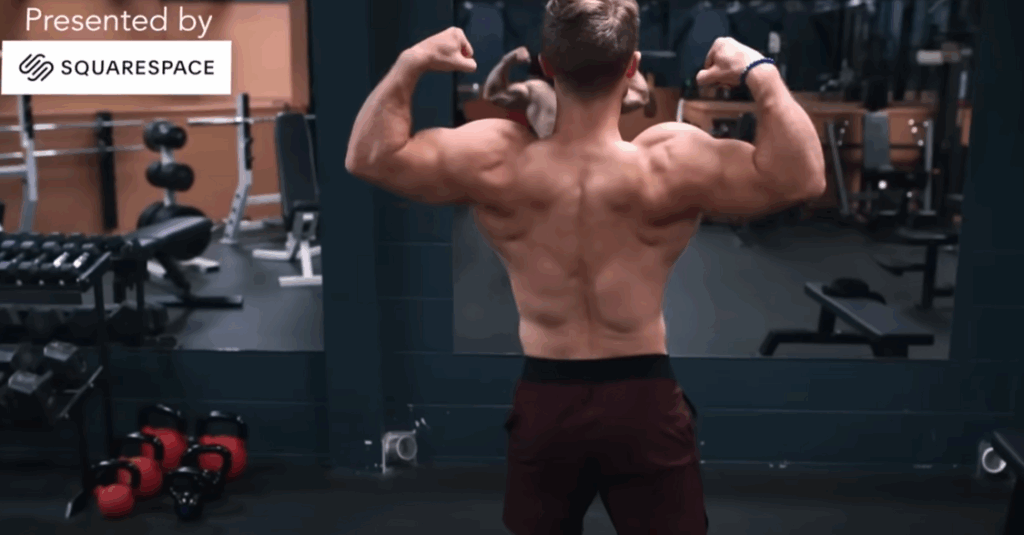
Back Width 101: What Creates That V-Taper?
A wide-looking back comes from two main factors:
- Lat Development – The latissimus dorsi are the primary muscles that create the sweeping outer-back shape.
- Small Waistline – A lean waist amplifies the illusion of width. While you can’t shrink your waist through back training, reducing body fat through proper diet and cardio will make your V-taper more dramatic.
Because we can only influence muscle growth directly through training, optimizing lat development is key to building width.
Pull-Ups and Pulldowns for Width: What Grip Is Best?
Most people know vertical pulls (pull-ups, chin-ups, lat pulldowns) are crucial for lat growth. But which grip maximizes width? Let’s look at electromyography (EMG) studies, which measure muscle activation, along with biomechanical logic.
The Research on Grip Width
- Early Findings (2002): Wide-grip pulldowns to the front showed slightly higher lat activation than narrow or neutral grips. But this study had a flaw—the narrow grips also used different hand positions, which could have influenced results.
- Improved Study (2010): Researchers compared wide and narrow grips while keeping wrist position consistent. Surprisingly, pronated (overhand) grips outperformed supinated (underhand) grips, regardless of width.
- Best Evidence (2014): A more recent study compared narrow, medium, and wide overhand grips under relative loading (each participant worked with their personal rep max). The medium grip—about 1.5 times shoulder width—showed the best overall lat activation and allowed for more weight to be lifted.
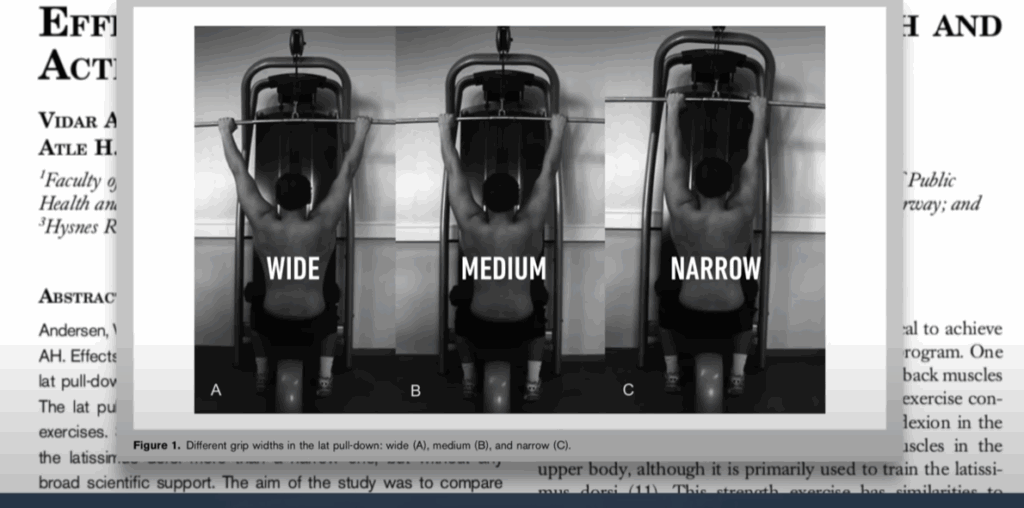
Biomechanics: Why Grip Matters
The lats perform two key actions:
- Shoulder Extension – Pulling the arm down in front of the body (common in rows and narrow-grip pulldowns).
- Shoulder Adduction – Pulling the arm down to the side of the body (better stimulated by wider grips).
Since most horizontal rowing exercises already train the lats through shoulder extension, programming logic suggests that pulldowns should emphasize shoulder adduction—making a wider overhand grip a good choice for targeting width.
Bottom Line for Width
- Best Grip: A medium-to-wide overhand grip (1.5× shoulder width) pulled to the front of the neck.
- Don’t Overthink: All grip widths (narrow, medium, wide) will still build width as long as you train with full range of motion and proper technique.
Rows for Back Thickness… or Width?
Rows are often labeled as “thickness builders” because they heavily recruit the traps, rhomboids, and rear delts. But research shows they also strongly activate the lats.
A notable study comparing seated rows and pulldowns found that rows actually produced greater activation in both the lats and traps. So, if you want a wider back, rows are still essential.
Adjusting Grip for Thickness vs. Width
Unlike pulldowns, biomechanics for rows flip the logic:
- Close-Grip Rows = More Width Focus
A close neutral or V-bar grip allows you to drive your elbows down and in, maximizing lat shoulder extension and minimizing trap dominance. - Wide-Grip Rows = More Thickness Focus
A wider overhand grip places more emphasis on transverse shoulder abduction and scapular retraction, which activates mid-traps, rhomboids, and rear delts for that dense, 3D back look. - Medium-Grip Barbell or Pendlay Rows = Best of Both Worlds
A grip slightly wider than shoulder width with elbows pulled back at about 45° recruits both the lats and traps effectively.
Programming for Maximum Back Growth
Vertical Pulls (Width Priority)
- Exercise Choice: Pull-ups or Lat Pulldowns
- Grip: Medium-to-wide overhand (1–1.5× shoulder width)
- Reps/Sets: 3–4 sets of 8–12 reps, full range of motion
- Cues: Think about pulling elbows “down to your sides” rather than simply bending your arms.
Horizontal Pulls (Thickness + Width)
- Close-Grip Rows: 3–4 sets of 10–12 reps, elbows driven down and in.
- Wide-Grip Rows: 3 sets of 8–10 reps, focus on squeezing shoulder blades together.
- Barbell Rows: 3–4 sets of 6–10 reps, elbows back at a 45° angle.
Common Back Training Myths Debunked
- “Wide Grips Are Only for Width, Close Grips Only for Thickness.”
Not true—every grip variation stimulates both width and thickness to some degree. - “Underhand Grip Is Best for Lats.”
While underhand (supinated) pulls allow heavier loads, EMG studies show pronated (overhand) grips tend to activate the lats more effectively. - “You Need Endless Grip Variations.”
Switching grips too often isn’t necessary. Focus on progressive overload with a few staple movements done with perfect form.
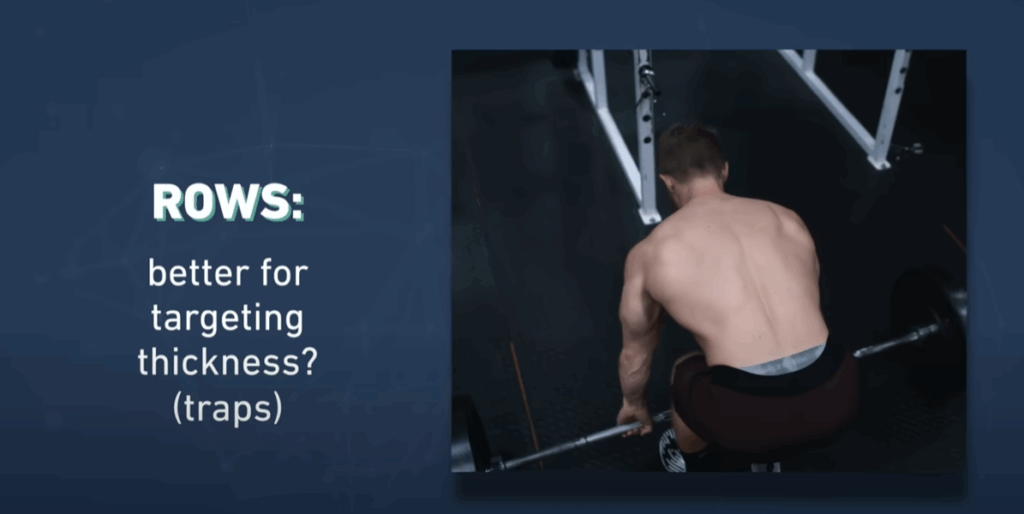
Practical Tips for Better Back Training
- Use a Strong Mind-Muscle Connection: If you can’t feel your lats working, lighten the weight and slow the movement.
- Pull With Your Elbows, Not Your Hands: This helps reduce biceps dominance.
- Train Through Full Range of Motion: Lock out the stretch at the top of pulldowns and fully retract your scapula during rows.
- Include Both Vertical and Horizontal Pulls: A balanced routine is key to building a wide and thick back.
Sample Back Workout for Width and Thickness
Here’s how you can structure an effective session:
- Pull-Ups or Lat Pulldowns – 4×8–12
- Barbell Rows (Medium Grip) – 4×8–10
- Close-Grip Seated Rows – 3×10–12
- Wide-Grip Machine Rows or Chest-Supported Rows – 3×10
- Face Pulls or Rear Delt Flyes – 3×12–15 (for rear delt and trap detail)
Final Thoughts
Building an impressive back isn’t about choosing between width and thickness—it’s about balancing both. Pull-ups and pulldowns will widen your V-taper, while rows will create thickness and density. But the best physique comes from using a variety of grips and angles, executed with great form and progressive overload.
So, instead of obsessing over tiny EMG differences, focus on consistent, intelligent training. Master a few key lifts, track your progress, and over time, your back will grow both wider and thicker—naturally creating that sought-after bodybuilding silhouette.


